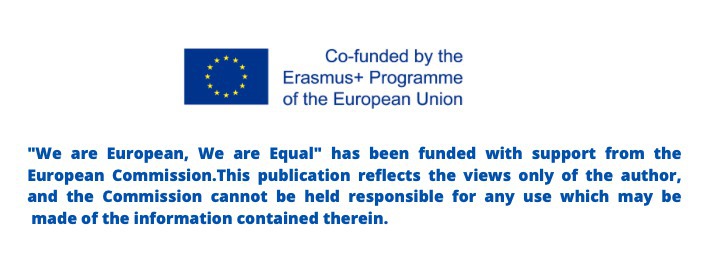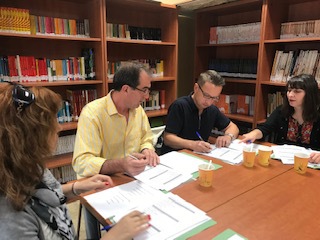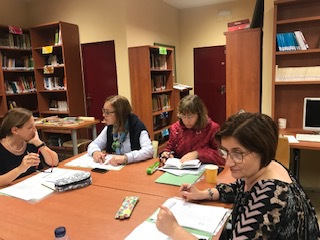KEY-COMPETENCE EDUCATION AT A EU LEVEL.docx

KEY COMPETENCE LEARNING AT EU LEVEL
This article aims to help teachers evolve towards a key-competence approach necessary for teaching in Europe providing basic knowledge. The article is a conclusive and collaborative summary part of our Erasmus + project “We are European, We are Equal”.
Key competences are defined as a dynamic combination of knowledge, skills and attitudes a learner needs to develop throughout life.
The Recommnedation of the European Parliament and the Council of 18thDecember 2006 on key comoetences for lifelong learning (2006/962/EC) establishes that key competences are necessary for personal development, active citizwnship, social inclusion and employment.
Currently, the Council of the EU on 22ndMay 2018 on ey competences for lifelong learning states that there are 8 key competences: 1) literacy competence, 2) multilingual competece, 3) mathematical competence and the competence in science, technology and engineering, 4) Digital competence, 5) Personal, social and learning to learn competence, 6) Citizenship competence, 7) Entrepreneurship competence and 8) Cultural awareness and expression competence.
- TheLiteracy competence is the ability to understand and express concepts and opinions in oral and written forms using materials across disciplines and contexts. The ELINET is the European Literacy Policy Network that helps develop this competence.
- TheMultilingual competence is the ability to use different languages appropriately and effectively for communication. The CEFR is the Common European Framework of Reference for Languages that measures the different levels of language competence.
- TheMathematical Competence and Competence in Science, Technology and Engineering is the ability to apply mathematical thinking in order to solve a range of problems in everyday situations, as well as the ability to explain the natural world and draw evidence-based conclusions in response to human needs. The EU STEM Coalition is the main network of national STEM platforms.
- TheDigital Competence involves the responsible use of digital technologies for learning and work. This includes information and data literacy, media literacy, digital content creation, safety, intellectual property and critical thinking. The DigComp 2.1. sets out the different levels and examples of use for digital competence.
- ThePersonal, Social and Learning to Learn Competence is the ability to effectively manage time and information, work with others and manage your own learning and career. The Socio-Emotional Learning in Europe is a new approach to education widespreading across many schools.
- TheCitizenship Competence is the ability to act as responsible citizens and to participate in social situations understanding economic, legal, political development and sustainability concepts. The Eurodyce Structural indicators for monitoring education and training systems in Europe supports the use of this competence.
- Entrepreneurship competence refers to the capacity to act upon opporutnities and transform them into projects that are of cultural, social or financial value by taking initiative and working collaboratively. EntreComp is the entrepreneurship Competence Framework since 2016.
- The last competence is Cultural Awareness and Expression Competence which involves an understanding of how ideas are creatively expressed in different cultures through a range of arts and developing one’s own ideas and sense of place or role in society. There is a Creative Europe Programme to support this competence.
Teachers could adapt their practices towards this methodological approach in a progressive and flexible way. A good way to start thinking with a key competence approach is to start assigning tasks. A task should be a problem-solving question based in real context in which pupils will need all their competences to solve. A task is usually sets out in stages, it includes Bloom’s complex cognitive processes and it has a final product.
You could include the use of many methodologies. The well-established in Europe are: Project-Based Learning, Flipped Classroom, Cooperative Learning or Service Learning.
Finally you need to assess the different tasks. We recommend the use of three main evaluation methods: Self-Assessment, Pair Assessment or Cooperative Assessment based on your own area’s assessment criteria and using grids, questionnaires or other formats.
Teachers could gather all their progress in a Digital Portfolio and share it at European level with other colleagues through Social Networks. eTwinning Platform is an excellent platform to work with a key competence approach with other schools in Europe.
For further information please read our extended article: https://drive.google.com/file/d/13hcP0E1zq10iHMcpAYt5e0g-Ds7G2t18/view?usp=sharingor visit our projects website for practical examples:
http://iesguadalquivir.org/we_are_european/

